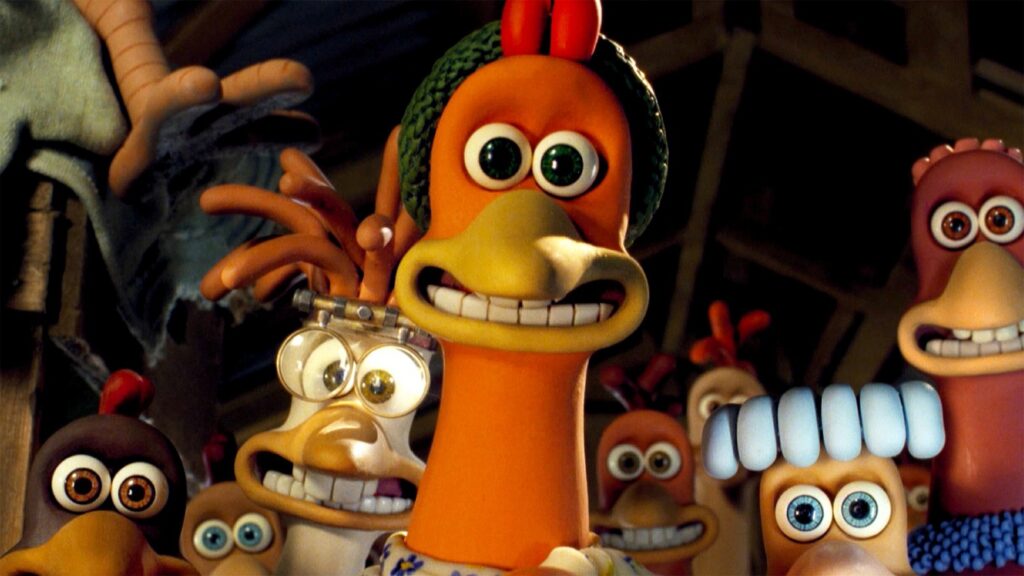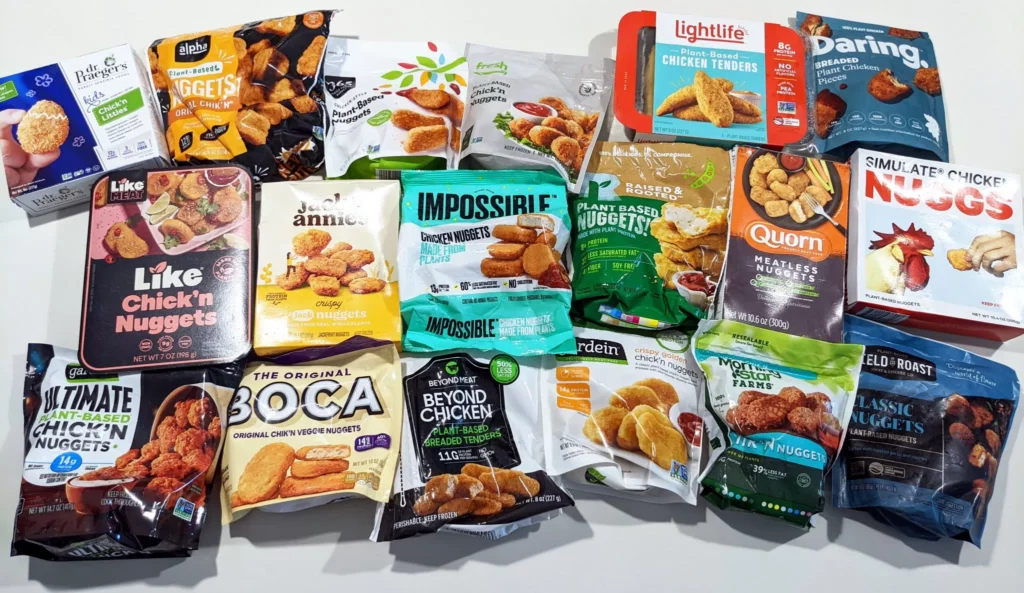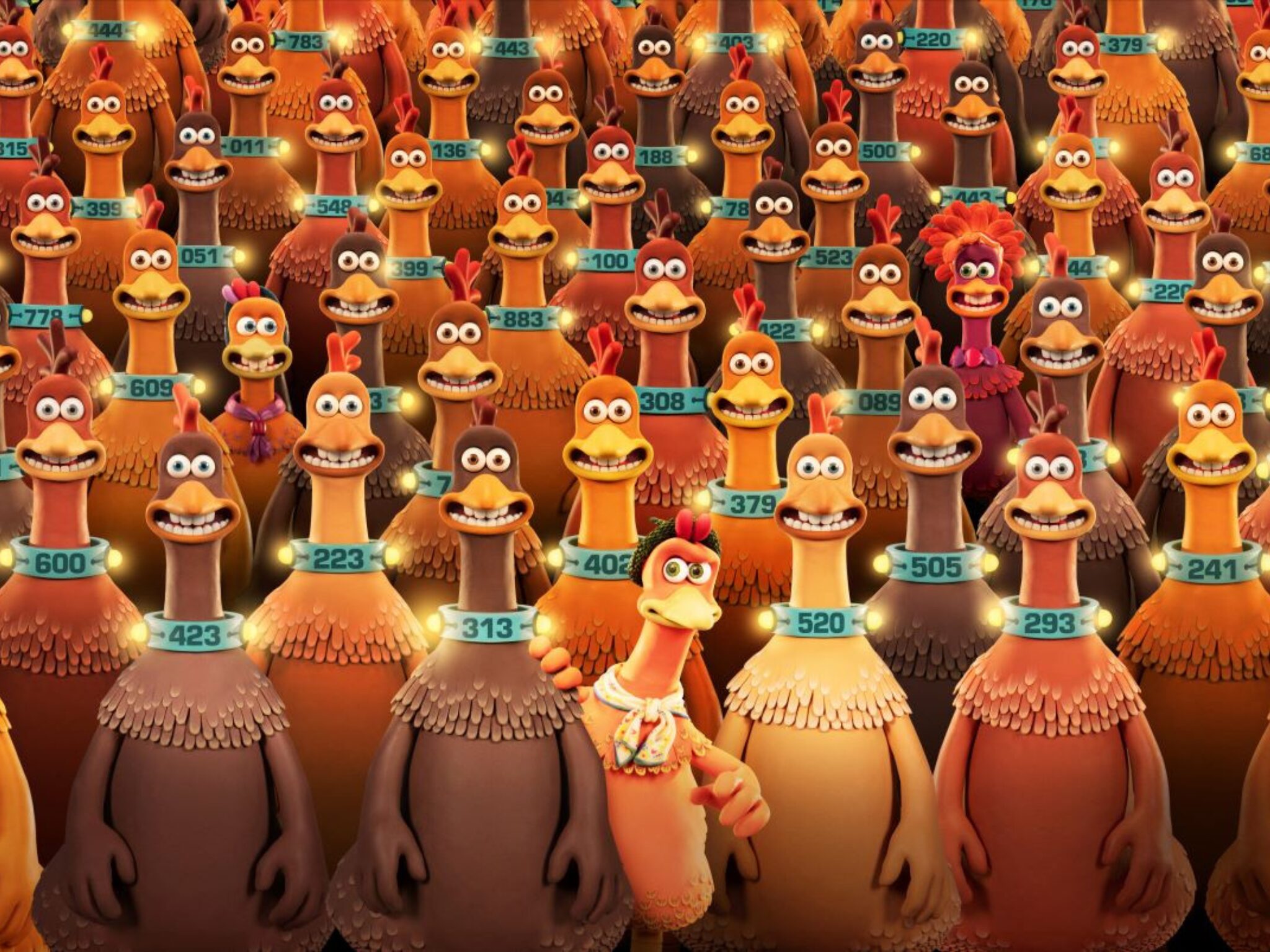5 Mins Read
Much like its 2000 prequel, Chicken Run: Dawn of the Nugget is establishing itself in the 2023 cultural zeitgeist – can it help change people’s diets into something more sustainable and animal-friendly?
“People want to know where their food is coming from, but they also don’t want to know. People would prefer to trust what is told to them rather than delve deeper.”
It’s a statement that sums up how meat – industrial or otherwise – is perceived by billions around the world. VFC co-founder Matthew Glover was speaking to the Guardian about the new Chicken Run movie, noting how inaction on the part of the consumer is down to successful lobbying and marketing by the meat industry.
Chicken Run: Dawn of the Nugget, which came out to cinemas and Netflix earlier this month and has been the talk of the town since, follows a rescue plot for thousands of chickens trapped in an industrial farm and destined to end up as a nugget. It’s one of those children’s movies that adults could really do with watching – given how vociferously we eat meat.
The filmmakers say they aren’t “here to preach” – but can the movie transform the way kids and adults see and eat food?
How Chicken Run 2 highlights factory farming

The stop-motion movie revolves around Ginger and Rocky, the married couple from the original movie, and their daughter Molly. The latter is interested in a far-off place where a company is doing something with chickens, and befriends fellow chicken Frizzle, who convinces her into infiltrating the company.
What follows is a fairytale-looking world of chickens who have an eerily hypnotised smile, which Molly and Frizzle realise is part of a plan to kill them and turn them into nuggets. The former’s parents end up on a rescue mission to save the chickens.
The stunned, brainwashed chickens in the factory farm are in that state of joy due to their lobotomised collars. This is because when a bird is frightened (when – for example – it senses it’s about to be killed), “its muscles tense and the connective tissue forms knots”, resulting in “tough, dry and flavourless meat”. If you engineer a chicken’s response to being ‘processed’, it will significantly enhance the flavour – and sales – of poultry meat.
The Aardman Animations film may be a fictional tale, but it’s one inundated with heavy doses of reality. “Whether or not they’ve set out to make a vegan morality tale, the reality is that this is what happens in poultry farms,” Richard McIlwain, CEO of the UK Vegetarian Society, told the Guardian. “They’re not making it up.”
In the UK, 95% of all chicken eaten is factory-farmed. Despite this being public knowledge, Brits are flocking to supermarkets to buy more and more of it – this year saw the value of chicken sales reach £285.1M, with 5.9 million kgs of the meat being sold more than 2022. This is thanks to the cost-of-living crisis – chicken is considerably cheaper than red meat products like beef or pork – as well as a perception that chicken is more environmentally friendly.
While the latter is technically true, it’s still bad for the planet – and worse for the actual birds. And it’s not just the UK: across the Atlantic, 99.97% of all chickens eaten by Americans are intensively farmed. This amounts to 8.9 billion birds, versus the 3.6 million that aren’t raised in factories. If that number is striking, consider the global figure: as of 2021, over 73 billion chickens are slaughtered the world over annually, according to the FAO.
Why Chicken Run chose the nugget

The focus on nuggets in the Chicken Run is a shrewd move. They’re amongst the most popular meat products, glorified by the big fast-food chains – it doesn’t feel like a coincidence that the movie is set in the 1950s, when fast food was just emerging.
This approach differs from that of other movies like Babe and Okja, or documentaries such as The Game Changers and Cowspiracy – while these films either focus on wider meats like pork, or the environmental and health benefits of reducing meat/eating more plant-based protein, Chicken Run hones in on a much-loved foodstuff.
In the UK, a recent survey conducted by plant-based meat giant Impossible Foods found that almost a fifth of 2,000 respondents “couldn’t live without” nuggets, and 13% would choose them as a final meal. It also revealed that just 16% of people preferred vegan nuggets.
This disparity can be seen in both retail and foodservice too – only Burger King offers a plant-based nugget out of fast-food giants, including McDonald’s and KFC. But in what feels almost like an overcorrection, the retail market for vegan nuggets is oversaturated. In the US, there are over 20 companies selling these (both branded and private-label), which has led to cases like vegan nugget startup Nowadays closing shop. In the UK, VBites – another business that sold plant-based nuggets as part of its portfolio – filed for administration earlier this month.
For many consumers, the overprocessing of plant-based ingredients used in alt-chicken nugget formulations is an issue – the ingredient lists are too long, the labels too crowded. But this perception perhaps misses the irony of the overprocessed nature of conventional chicken nuggets. At McDonald’s UK – hardly known as a clean-eating mecca – chicken just makes up 45% of the McNugget, while a 2013 study revealed that only 40-50% of the content of the chicken nuggets sold by two fast-food chains in the US was meat, the rest being fat, muscle, tissue and bone.
This is what Chicken Run 2 hopes to shine a light on. “We want the film to be engaging and entertaining and a great ride, mostly,” said the film’s director, Sam Fell. “But yes, if you come away and you think a little bit more like a chicken by the end of it, then that’s not a bad thing.”
Similar films have sparked a huge uptick in veganism and vegetarianism – Babe being a prime example – can Chicken Run: Dawn of the Nugger replicate that effect? Jon Ronson, who co-wrote the similarly galvanising Okja, certainly thinks so. “This will have an impact. It sounds quite upsetting and traumatising but I trust Aardman to do it in a fun way,” he told the Guardian. “All over the world, you’ve got these vast numbers of animals confined indoors. Art is supposed to reflect a dark reality. So all power to them.”



